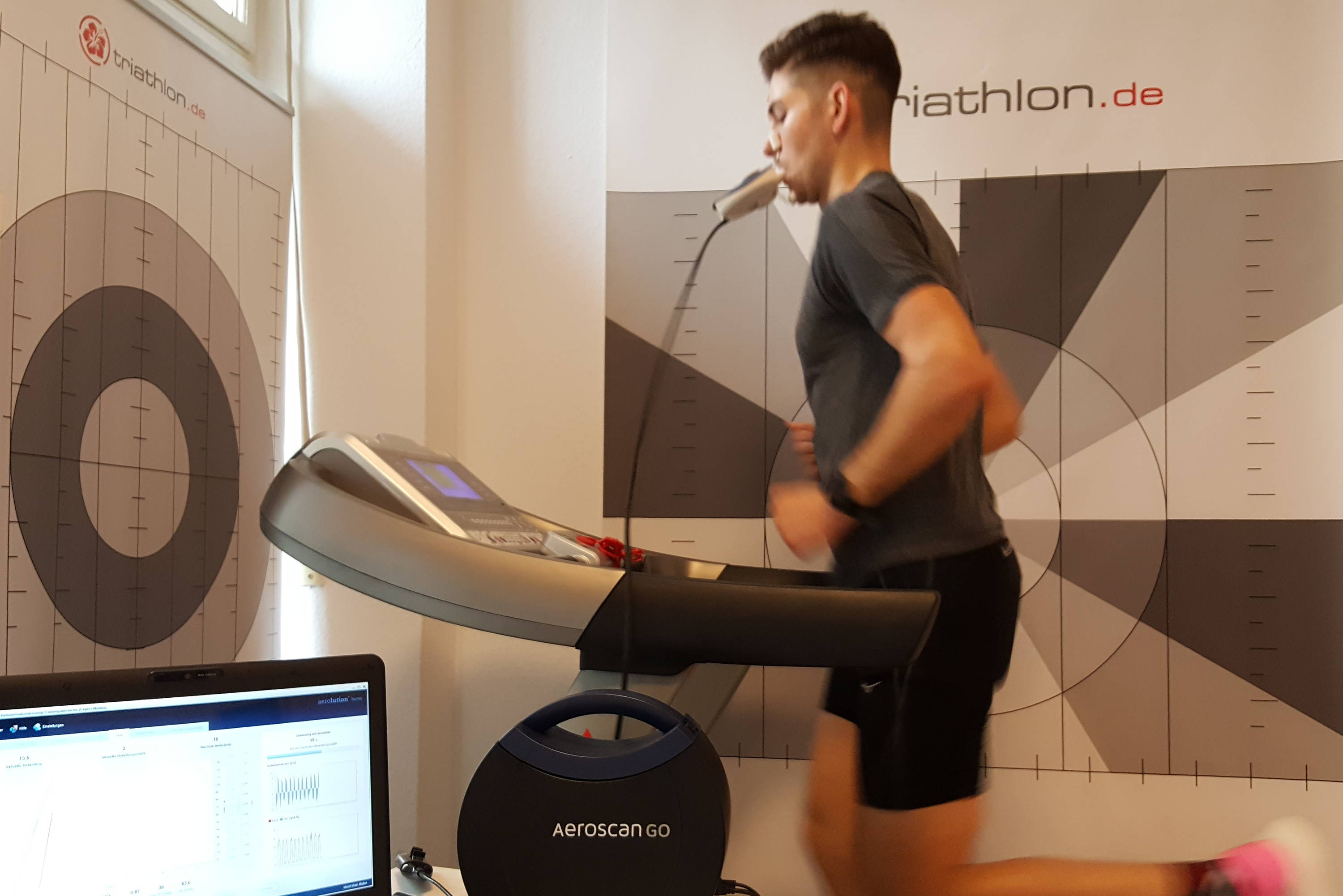Fettsäuren und Kohlenhydrate sind die beiden wichtigsten Energielieferanten bei Ausdauerbelastungen. Im Gegensatz zu den kurzkettigen, schnell verfügbaren Kohlenhydraten können die langkettigen Fettsäuremoleküle ausschließlich aerob - das heißt nur unter ausreichender Sauerstoffzufuhr - aufgespalten und verstoffwechselt werden. Damit wird der Fettstoffwechsel (FSW) zu einem wichtigen Indikator für die aerobe Langzeitausdauer. Ein gut trainierter FSW schont die wertvollen Glycogenspeicher des Körpers für intensivere Belastungsphasen. Dadurch wird das Leistungspotenzial insbesondere auf Mittel- und Langdistanzwettkämpfen signifikant verbessert. Vor allem auf den langen Triathlondistanzen ist die Fähigkeit der Energieversorgung der Arbeitsmuskulatur ein limitierender Faktor. Es lohnt sich also einen Blick auf den Fettstoffwechsel zu werfen, um ihn im Training gezielt anzusteuern zu können.
Wovon ist der FSW abhängig?
Unter anderem davon, wie gut die Fettdepots des Körpers mobilisiert und diese dann zu den Muskelzellen transportiert werden können. Dort spielt dann die Dichte der Mitochondrien ("Kraftwerke der Zellen" - hier findet die eigentliche Verbrennung und Energiegewinnung statt) sowie die Sauerstoffversorgung der Muskelzellen eine entscheidende Rolle. Diese hängt wiederum von der Belastungsintensität ab. Der Fettstoffwechsel erreicht ein Maximum (FATmax) vor allem auf moderatem Intensitätsniveau.
Bei Untrainierten liegt der FATmax zumeist bei ca 50-55% der VO2max. Trainierte Ausdauerathleten erreichen ihren FATmax zumeist bei 60-65% der VO2max.
Das bedeutet einerseits: relativ zur VO2max findet der FSW bei Trainierten auf einem deutlich höherem Leistungsniveau statt - diese Leistung kann langandauernd aufrecht erhalten werden. Andererseits: je höher die individuelle VO2max, umso höher auch die Leistung/Geschwindigkeit bei FATmax.
Mit einem gut ausgeprägten FSW hebst Du Dein Ausdauergrundniveau also auf eine höhere Leistungsebene.
Den Fettstoffwechsel trainieren
Durch gezielte Methodik und Intensitätssteuerung lässt sich der Fettstoffwechsel nachhaltig verbessern. Klassische Trainingsmethoden sind dabei lang andauernde, extensive Belastungen im FATmax Bereich, Training ohne Nahrungszufuhr währenddessen oder auch Nüchterneinheiten. Während der Effekt des Nüchterntrainings früher noch als unwesentlich bezeichnet wurde, ist es heute eine der Standard-Trainingsmethoden um die Fettverbrennung und den FSW anzukurbeln.
Wichtig zu wissen: vor einer Fettstoffwechseleinheit sollten grundsätzlich 2 Stunden vorher keine Kohlenhydrate mehr aufgenommen werden.
Neuere Ansätze beziehen aber auch gezielte Belastungswechsel (gering-hoch) bis hin zum High-Intensity-Intervall-Training (HIIT) für das Fettstoffwechseltraining ein.
Ein Beispiel dafür ist die "Grundlageneinheit mit initialer Intensität". Dabei wird zu Beginn des Trainings ein intensiver Reiz / Reizfolge gesetzt (z.B. Laufen/Rad: 3-6x 40s HIT + 20s locker) und mit einer Grundlageneinheit kombiniert, da so der Fettstoffwechsel durch den “Nachbrenn-Effekt” verstärkt zum Einsatz kommt.
Welche ist die beste?
Unter diesen Trainingsmethoden ist es schwer eine “beste” Methode zu küren. Wie so oft: die Abwechslung macht's. Seid ihr jahrelanger Nüchternläufer, fallen die zu erwartenden Effekte nur noch sehr gering aus, der Körper hat sich bereits an diese Trainingsmethodik gewöhnt - hier könnt ihr euren FSW aber wieder mit gezielten Belastungswechseln aus der Reserve locken. Seid ihr eher der Typ "Nur schnell macht schnell", solltet ihr euch öfter mal auf längere extensive Trainingsbelastungen einlassen.
Das Problem: langsames Training wird häufig als Zeitverschwendung angesehen, da man während der Trainingseinheit leicht deutlich mehr Kilometer zurücklegen könnte. Aber das ist auch nicht das Ziel des Trainings! Der Geschwindigkeitsdurchschnitt spielt beim FSW-Training keine Rolle. Trainingsqualität kann auch (vergleichsweise) langsam sein.
Fazit
Die Möglichkeit, ein höheres Leistungsniveau in Training und Wettkampf erzielen zu können, baut auf einem gut funktionierenden Fettstoffwechsel auf. Dieser ist Gradmesser für die Effizienz der aeroben Ausdauerfähigkeit und damit die Ausgangsbasis die weitere Tempoentwicklung. Um den Fettstoffwechsel möglichst gezielt trainieren zu können, ist es wichtig, die individuellen Intensitätsbereiche zu kennen, in denen die Fettstoffwechselaktivität gezielt angesteuert wird. Daraus können dann die spezifischen Trainingsbereiche und Trainingsmethoden abgeleitet werden.




















